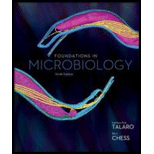
You have been handed the problem of diagnosing gonorrhea from a single test. Which one will you choose and why?
To analyze:
Which diagnostic test is to be used, if gonorrhea must be diagnosed using one test only.
Introduction:
Gonorrhea is caused by a Gram negative bacterium - Neisseria gonorrhoeae. There is a need to differentiate it from other Gram negative bacteria during diagnosis.
Explanation of Solution
N. gonorrhoeae can be identified by a series of differentiating tests, beginning with the Gram stain, followed by analysis of oxidase production, sugar fermentation, growth patterns, nitrogen reduction and pigment production. However, more rapid methods are preferred for early diagnosis.
One property of this pathogen that allows a reasonably accurate diagnosis is that it tends to get engulfed by phagocytes, and remain viable in them. So collecting neutrophils from the urethra, vaginal, or exudates from the eyes of any of aforementioned parts, and performing a Gram stain to identify Gram-negative diplococci is a single test that can diagnose gonorrhea.
To identify N. gonorrhoeae with high precision in a single test, PCR analysis is used on urine samples.
A Gram stain on neutrophils from the urethra, vaginal, or exudates from the eyes of any of aforementioned part, to identify Gram-negative diplococci, can diagnose gonorrhea with reasonable accuracy.
Want to see more full solutions like this?
Chapter 18 Solutions
Foundations in Microbiology
- In addition to the genitals, what other areas of the body can be affected by gonorrhea? How does transmission occur for each area?arrow_forwardWhat is the etiology of gonorrheaarrow_forward"About 10-15 percent of men and 80 percent of women may have no symptoms of gonorrhea". What may cause the difference in the percentage of asymptomatic men and women with gonorrhea?arrow_forward
- Name two substances released by lactobacilli that help protect the vagina from potential pathogens.arrow_forwardWhat are the early signs of gonorrhea?arrow_forward77. The ova that does not float in the saturated salt solution a. H. nana b. T. solium c. Ancylostoma d. A. lumbricoides 78. Associated with neoplasm in the biliary duct or cancer of the liver? a. C. sinensis b. F. hepatica c. P. westermanii d. D. latum e. NOTA 79. Gynecologicalschistosomiasis: a. S. haematobium b. S. japonicum c. S. mansonii d. S. gravicum e. NOTA 80. Ocular cysticercosis: a. T. saginata b. T. solium c. H. nana d. H. diminuta e. NOTAarrow_forward
- It has been stated that the actual number of people in the United States who have genital herpes may be a lot higher than official statistics depict. What are some possible reasons for this discrepancy?arrow_forwardUrethral (male) or cervical (female) discharge and painful urination are the most common symptoms of gonorrhea. What is the differential diagnosis of these symptoms? How would the responsible pathogen be determined?arrow_forwardA man wants to divorce his wife because he believes her genitalherpes could only have been acquired sexually. Her doctor says she isinfected with type 1. Suggest a more likely source.arrow_forward
- Lifetime Physical Fitness & WellnessHealth & NutritionISBN:9781337677509Author:HOEGERPublisher:Cengage
 Comprehensive Medical Assisting: Administrative a...NursingISBN:9781305964792Author:Wilburta Q. Lindh, Carol D. Tamparo, Barbara M. Dahl, Julie Morris, Cindy CorreaPublisher:Cengage Learning
Comprehensive Medical Assisting: Administrative a...NursingISBN:9781305964792Author:Wilburta Q. Lindh, Carol D. Tamparo, Barbara M. Dahl, Julie Morris, Cindy CorreaPublisher:Cengage Learning





